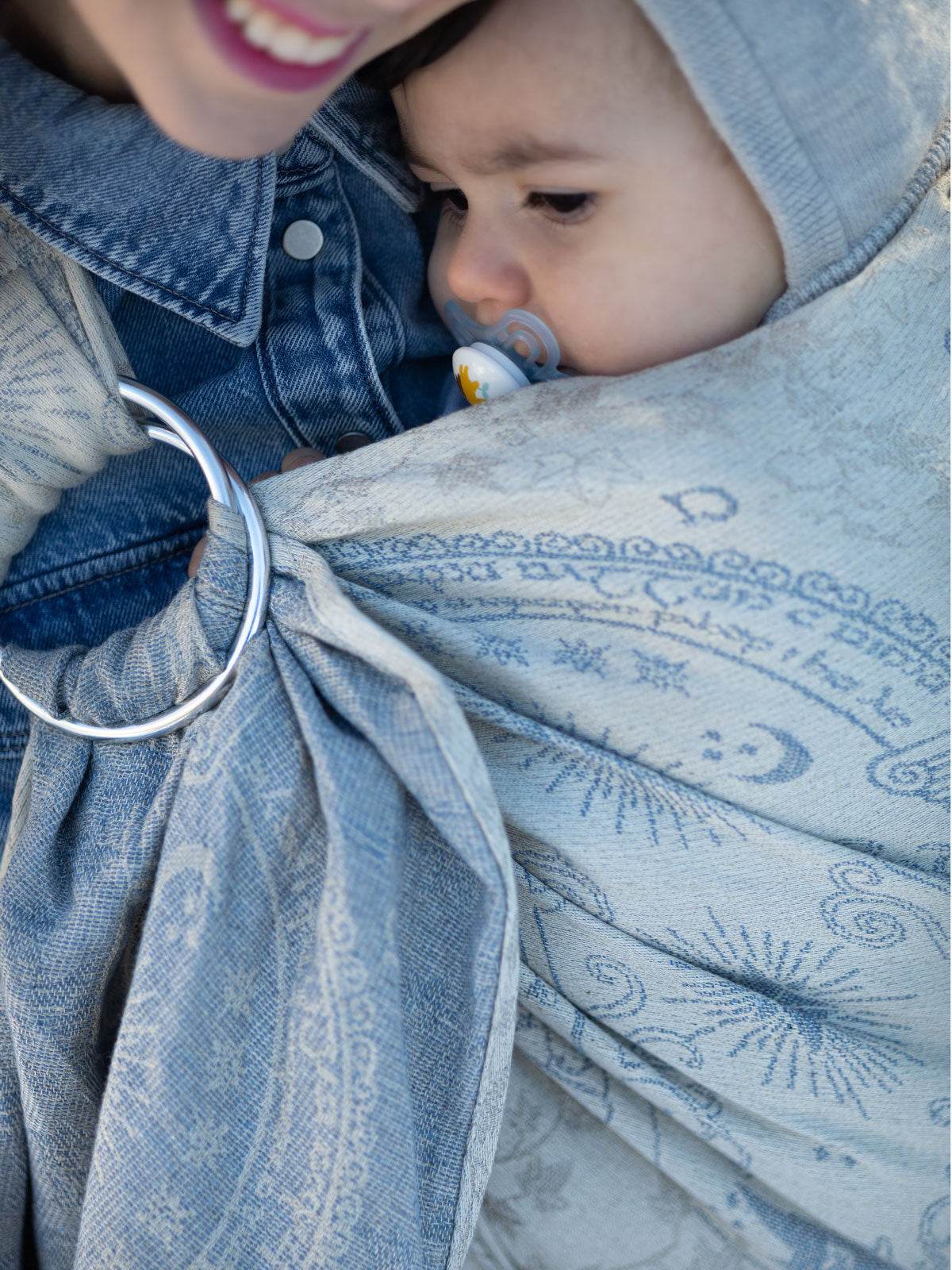
11 Myths about Using a Baby Carrier
11 Myths about Using a Baby Carrier - what's fact & what's fiction?
It can be difficult when friends and family question your parenting and you are wondering what are the myths about using a baby carrier and what is fact. You may have questions about the health and safety of using a baby sling such as worrying if baby carriers are bad for your baby's hips. We go through some of the main concerns you and those around you may have about using baby wraps, slings and carriers to put your mind at ease and give you the support you need.
1. Using a Baby Carrier or Sling Will Make Your Baby Clingy
Parents are often told by society that they will create “clingy children", “make a rod for their own back" or "spoil" them by using a sling. These ideas really emerged in Victorian society but have stuck around. Rather than creating a problem, research now clearly shows that keeping your baby close enables you to respond to their needs quickly.
Children's brains grow rapidly in the first three years of their life and every positive experience results in more connections being made in the brain. If a baby is upset and is then picked up, soothed and kept close, this helps to form a new pathway in their brain. The more often this happens, the more formed this connection becomes and the baby learns love and trust.
Therefore, by nurturing your baby and responding to their needs you're actually helping a strong bond to develop, allowing your baby to feel safe and know that you will help and comfort them whenever necessary.
Children who form these secure attachments with caregivers then have the confidence to explore their surroundings. They feel secure in the knowledge that they can return to their caregiver and have their needs met at any time.
There's lots of evidence to suggest that secure attachment in childhood leads to confidence and independence later in life. It aids the ability to form healthy relationships and to be more equipped to deal with stressful times.
You can't spoil a baby by holding them! Providing babies and children with trust and security helps to build a strong foundation for good mental health as adults.
2. Your Baby is Too Old to be Carried in a SlingWhile using a sling can be incredibly beneficial in the fourth trimester it isn't just for newborn babies.
As we discussed above, carrying your baby can help form a secure attachment. This attachment process doesn't just happen in the first few weeks after birth but is formed over the first few years of their life.
A secure attachment is built by being sensitive and attending to your baby's needs. Using a sling keeps your baby physically close to you, allowing you to pick up on any changes in their mood quickly.
Being aware and responsive to their needs helps to reduce crying, which can build your confidence and reduce stress for both you and your baby.
You can also use a sling to help provide a sense of safety and security in stressful situations or unfamiliar surroundings. By offering this place of safety and reassurance, and by responding to their needs, you help this secure attachment develop.
3. Slings are dangerous
Carrying your baby is not dangerous, in fact there are many huge benefits to using slings, including regulating their body temperature, heartbeat and hormones, preventing flat head syndrome and encouraging healthy physiological development.
As with any baby equipment, there is a need for monitoring when you use a sling. But, carrying them close to you means it's easy to keep an eye on them, making slings very safe when used correctly. Choose one that is well crafted, which uses safe fabrics and has been appropriately safety tested, follow the instructions and carry them with their face visible and no fabric covering their airway. Your sling should be snug and hold them in a high, upright position with no slumping and that keeps their chin off their chest.
You can read more about safety in slings here. Oscha Slings are approved by the International Hip Displasia Association and come with instructions on how to use safely. See baby slings
4. Using a Baby Carrier is Bad For Your Back
A well-fitted sling that positions your baby in a spread squat should be comfortable and ergonomic for you because this position works with your centre of gravity. Using a sling can relieve or reduce any discomfort you experience when carrying your baby in your arms as it helps to spread the weight equally. If you're experiencing any discomfort while using your sling there's often some tweaks you can try which may make a big difference. This page can lead you to help for adjusting different types of baby carriers to prevent back pain.
Sometimes it's a good idea to try a different carry with your woven wrap or another type of sling, as some will provide better support for your body than others. You can contact a sling consultant for help with tweaks, or finding a sling or carry which works for you. Find a local sling consultant here.
If you are experiencing pain when you carry it's important that you stop and consult a medical professional. It's unlikely that using a sling has caused an issue but it may have highlighted an existing condition.
When your baby is old enough you can try a back carry which shifts the weight away from your front and can be more comfortable with heavier children. It's possible to carry up to preschool ages and beyond if you find a sling that is comfortable for you!
If you'd like ongoing support with your Oscha sling please email us on info@oschaslings.com
5. Your Baby Will Never Learn To Walk if You Use a Sling
Some people hold the view that toddlers are too old to be carried as they can now walk. However, it's simply not practical advice. Young children can't walk very fast or very far, having a sling handy can give you confidence to go for longer walks or days out without worrying that they will tire. And popping a sling in your bag is often easier than taking an empty pushchair with you.
There are also lots of situations where it's safer to carry your child, near busy roads or in crowded places for example. And, of course, a cuddle in a sling can help calm an overwhelmed toddler and provide reassurance.
So there are many circumstances where you may end up carrying your toddler or preschooler in your arms or on your shoulder, but using a well-fitted sling is much more comfortable for you both and can help prevent back pain. If you've never carried before then your body might need time to adjust and it's advisable to start with carrying for short periods and build up.
Read more about how long you can carry your child for in a sling
6. My Baby Hates The Sling Or Only Likes to be Facing Forward
Some babies do fuss or cry when you first carry them in a sling, but don't worry this isn't uncommon and it doesn't mean that they hate being carried. It's a new experience for them, and crying and fussing is how babies communicate that they're not sure about something. If it's a new experience for you too, you might be slightly apprehensive.
Babies pick up on tension so if you're not feeling confident they're more likely to be unsettled. If you're happy that they're not hungry, need a change, that they're not too hot or cold, and that they're clothes are comfy and nothing is pinching, you can try again. Once they're safely in the sling go for a short walk, it's amazing how quickly babies settle with some fresh air and movement. Take it slowly, and usually with a little practice you'll both start to love the experience.
Older babies may wriggle, crane their necks and push back in the sling. These behaviours are sometimes misinterpreted as a sign that the baby hates the sling or needs to face forward. But often the behaviours are related to development stages and there are different carries you can try until the phase passes.

7. You Will Create Bad Sleep Habits If Your Child Naps in a Sling
Both my children went through stages where they would only nap if they were held or carried. Sound familiar?
This is perfectly normal and does not create bad sleep habits. Babies feel safe when they're near you, so it's understandable that they will fall asleep in a sling more quickly than alone in a cot.
There's actually lots of benefits to a sling nap -
- Keeping your baby close to you significantly reduces the risk of SIDS for babies under 6 months.
- Research shows that a contact nap promotes longer, more restful sleep.
- By keeping them close you both produce the hormone oxytocin which reduces stress and promotes bonding.
- The likeliness of flat head syndrome is reduced as there's less pressure on just one area of their head.
Keeping your baby close can actually help them sleep. Having your baby snuggled against you invokes feelings of being in the womb. The warmth, closeness, gentle movement and familiar smells all help recreate that calming environment and releases the hormone oxytocin, which has a calming effect on the brain.
Carried babies often sleep more and cry less. Napping in the sling will not create bad habits but can create healthy sleep habits when they're older. If your child associates sleep with reassurance and feelings of safety then, when the time comes, they'll be happy to sleep on their own.
How does babywearing affect sleep?
8. Slings Don't Provide Enough Head Support
Babies are born with disproportionately large heads and without the neck muscles to support it yet. When you hold a newborn you are always reminded to support their head, so it's understandable that parents look for this head support in slings. However, if your baby is sitting in a spread squat, M position, with their legs supported into the knee pits, their head will naturally be supported. This curved position of the spine prevents the head from flopping back.
You can add some additional head support if you wish, by using the hood of a carrier, pulling the material of a wrap over the back of their head or using a rolled up muslin secured by the sling to support the neck. Just ensure that you never cover their airway and that their face is visible at all times.
9. Your Baby Should Never Wear a Sleepsuit When in a Sling

You often see people online being advised against dressing their baby in a sleepsuits or babygros when using a sling. It's not particularly practical advice, especially for newborns who often live in these for the first few months!
When your baby is ideally positioned in a sling with their knees above their bottom any footed items of clothing can ride up and squish their toes. However, there's no need to avoid this handy outfit entirely. Once your baby is in the sling check that the material isn't pressing on their toes. Sometimes you may just need to pull the ends away from their toes a fraction to give them wiggle room. If their sleepsuit is getting a little snug you may need to size up sooner to avoid this.
Be mindful of what your baby is wearing but there's no need to avoid cute onesies altogether!
10. Baby Wraps & Slings Are Too Difficult To Use
When you're unfamiliar with something it may seem tricky to begin with. But, as with most new things, the more you practice the easier it becomes. There are also different types of slings. A woven wrap, although arguably the comfiest type of sling, requires more practice than, say, a soft structured carrier which many people find easy once they've been shown how.
It's also important to remember that we all learn in different ways and have different abilities. One person might find a ring sling quite simple to use but others take longer to learn. Some people find tie-on carriers easy while others may prefer buckles. You can read more about choosing your sling here.
11. Baby Carriers are Bad For Baby's Hips
This is something parents often hear and worry about. There is no evidence to suggest that using a well-fitted carrier can cause hip issues. On the contrary, there is a lot of evidence to show that using a sling with your baby in the optimum position can actually support the development of healthy hips.
A well fitted, wide-based carrier, or woven wrap or ring sling which reaches from one knee pit to the other knee pit, will support your baby in a spread squat position which encourages the correct formation of a deep socket joint. The International Hip Dysplasia Institute acknowledges Oscha slings as “hip-healthy baby carriers (when used as directed).
You can read more about your baby's positioning and comfort here.
If you're new to carrying your baby you will naturally have lots of questions and will seek different sources for answers. It's important to get the right information to make sure you're doing the right thing for you, and your baby. We hope this answers some of the key questions that you may have about carrying and how you can make sure you can enjoy carrying confidently and safely.
Written by Jillyan Graham
Jill is a Baby Carrying Consultant based in the Scottish Borders and is Mum to two girls.
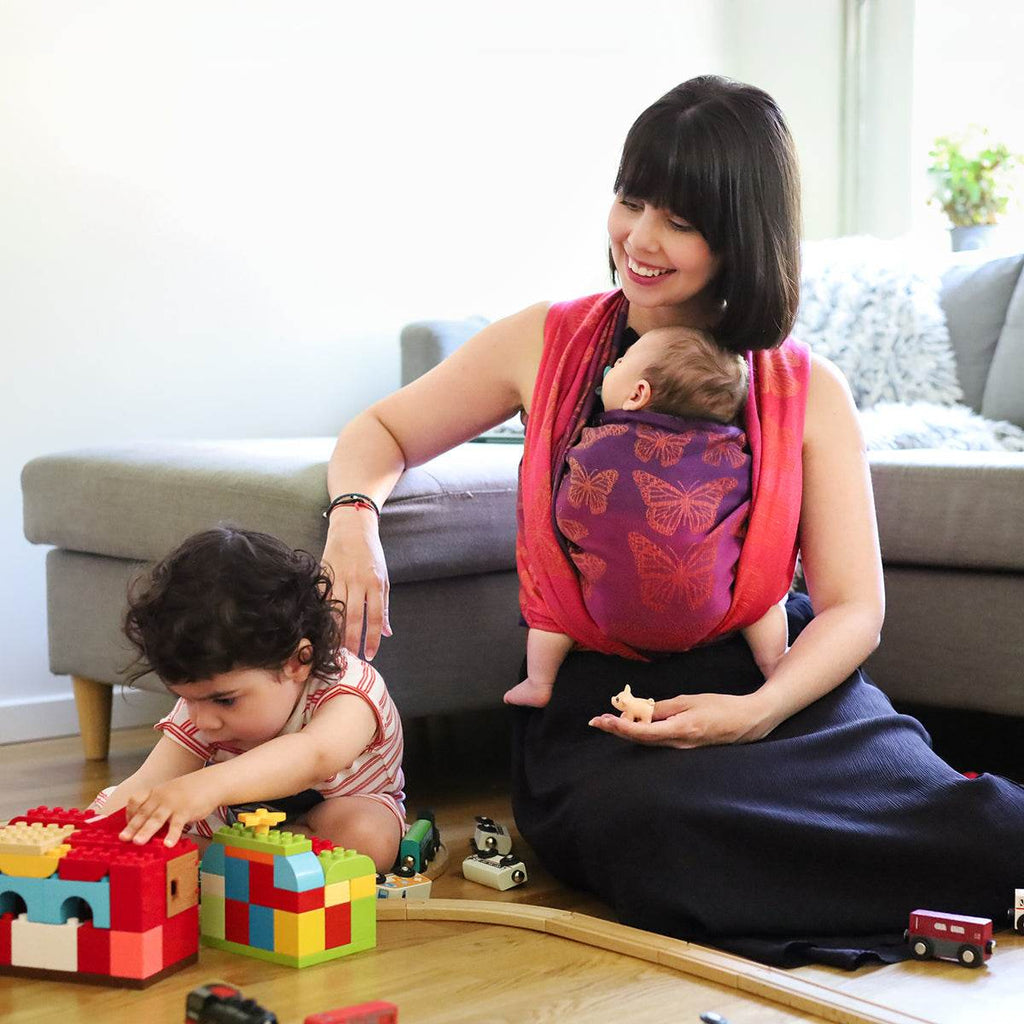
Best Baby Carrier For Newborns 2025
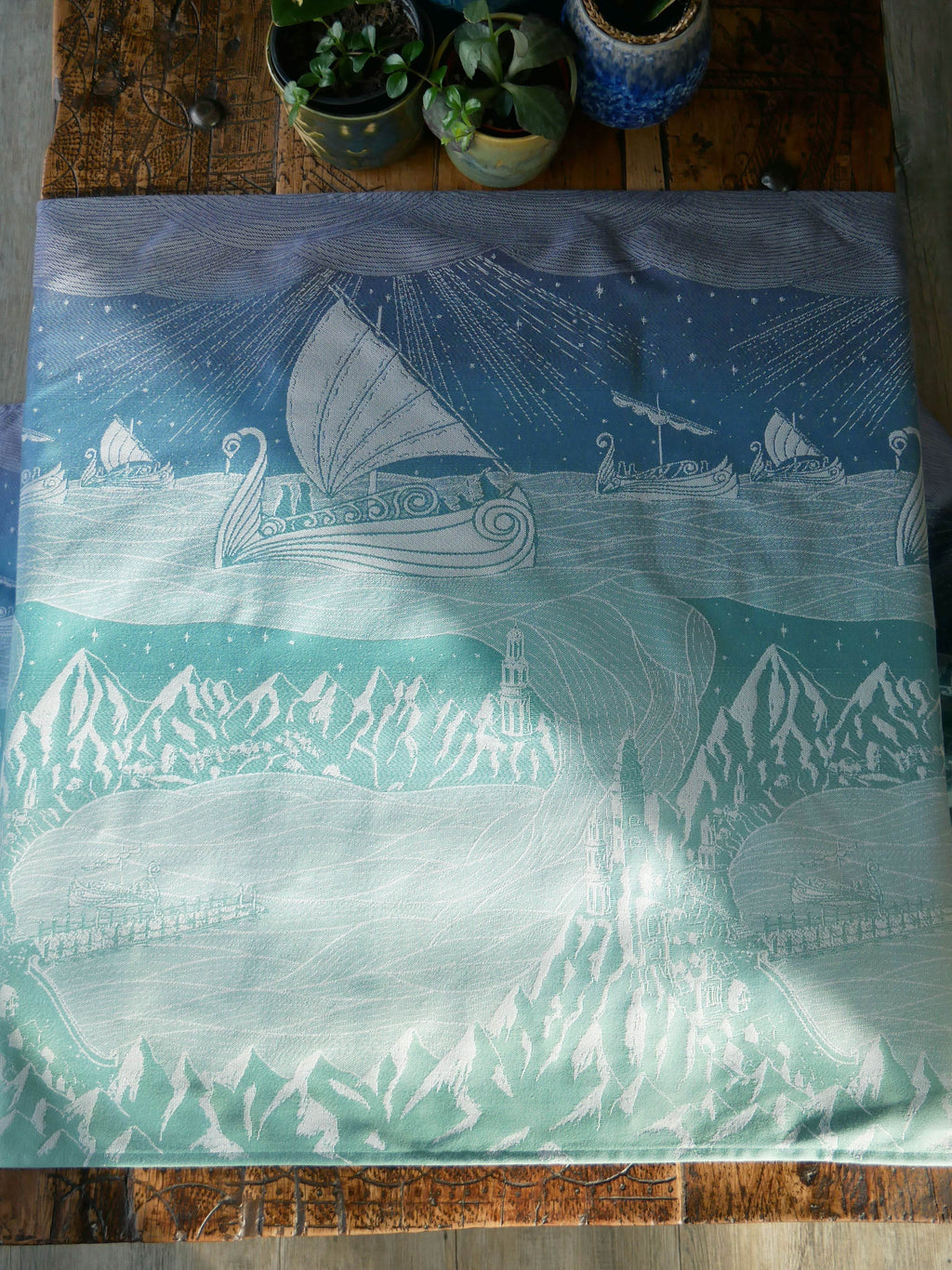
Grey Havens: Oscha Lord of the Rings Design Development
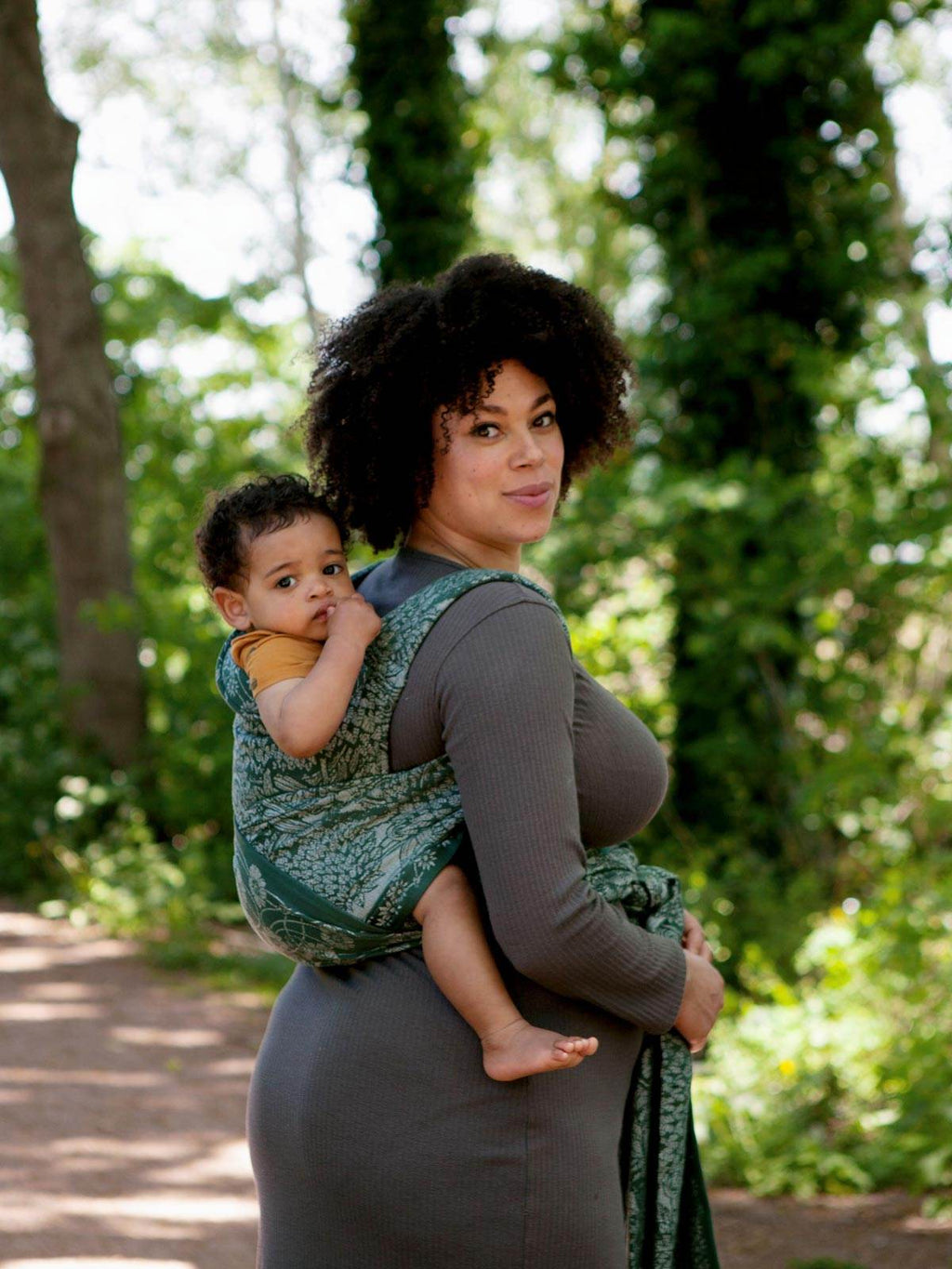
Can Baby Carriers Cause Back Pain?

The co-founder of Oscha & twin mum of 3, Zoe is a seasoned babywearer and is passionate about all things baby carriers and Middle-earth!
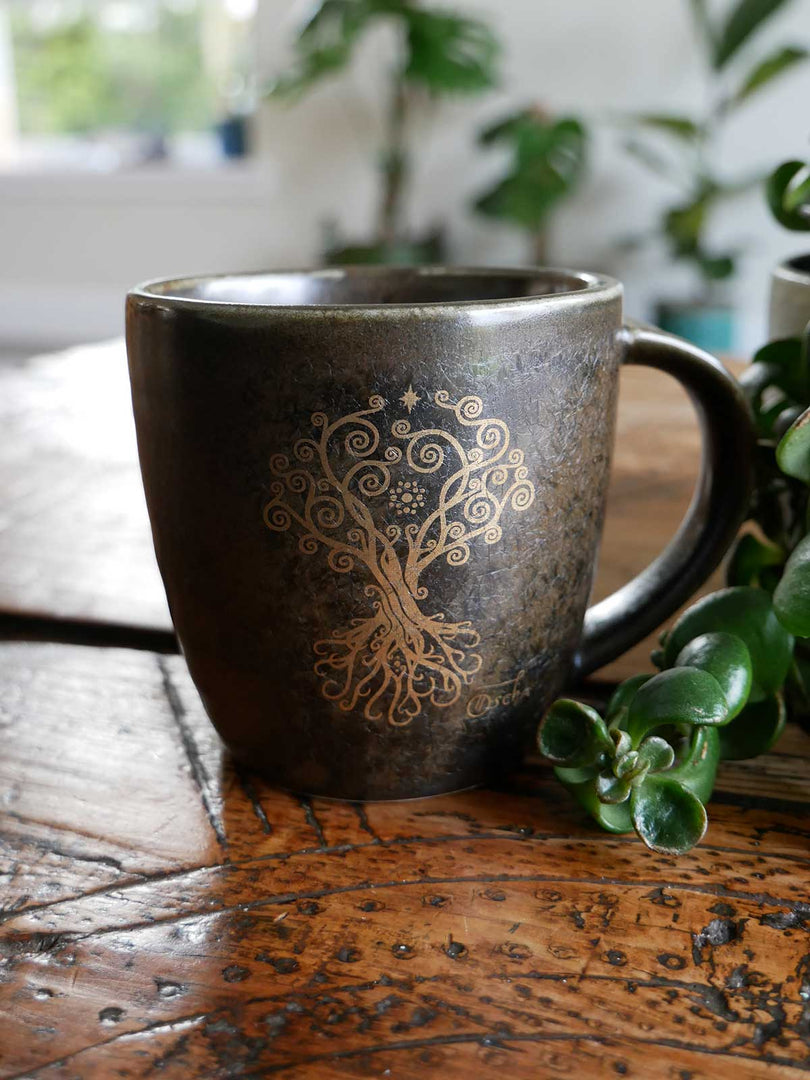





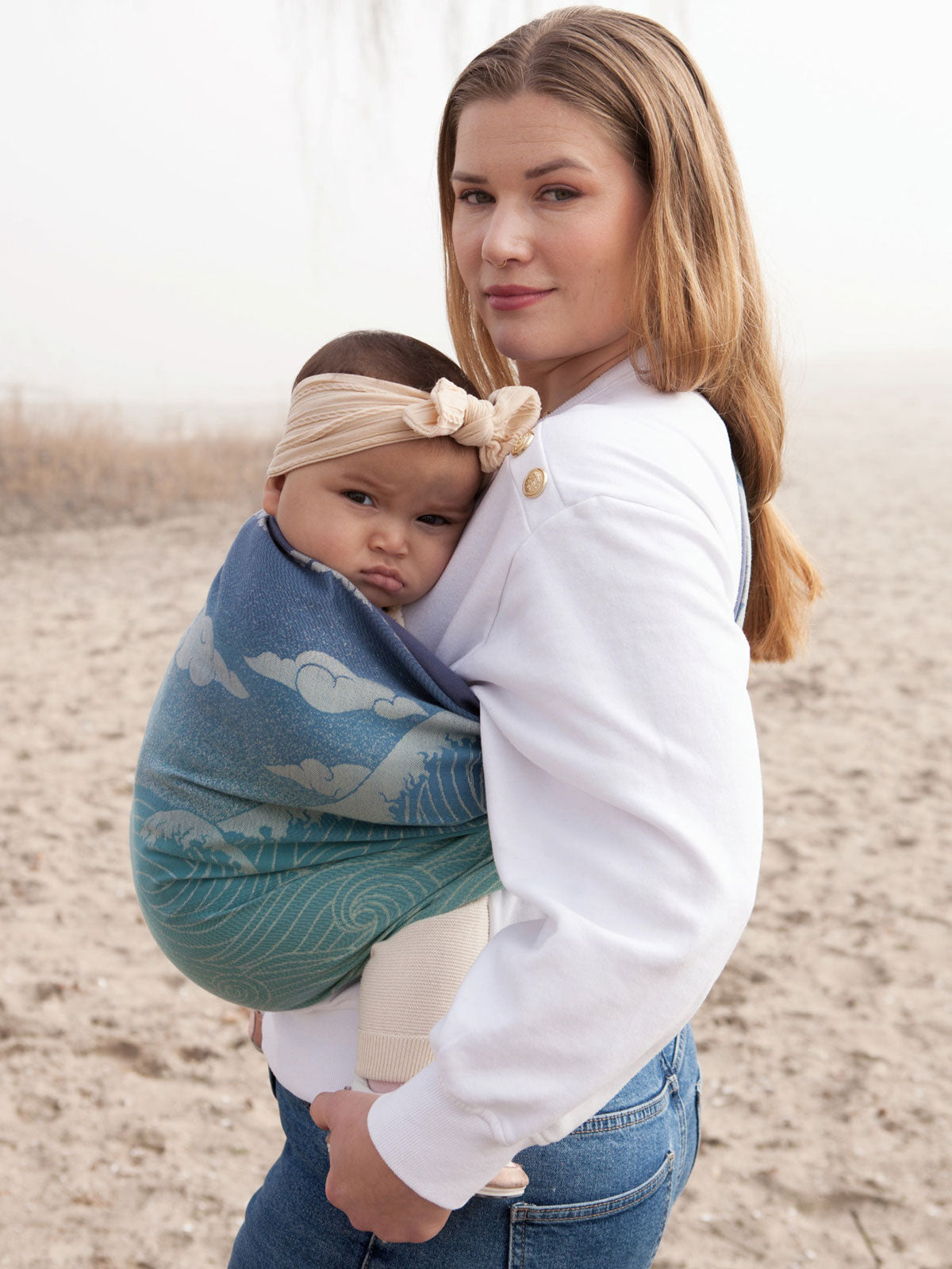
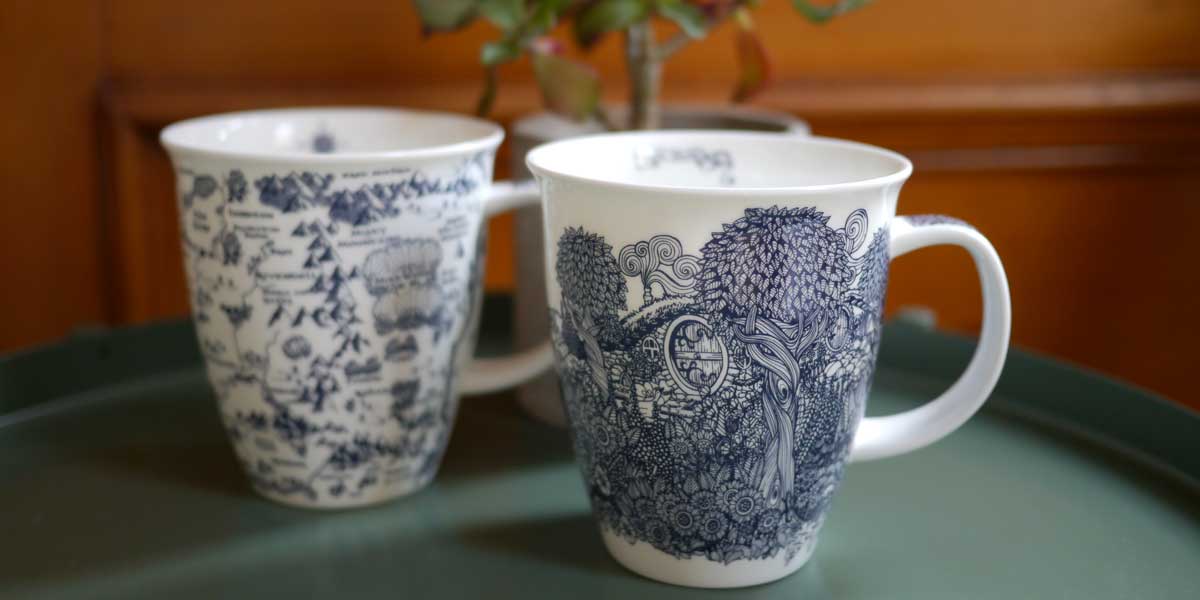
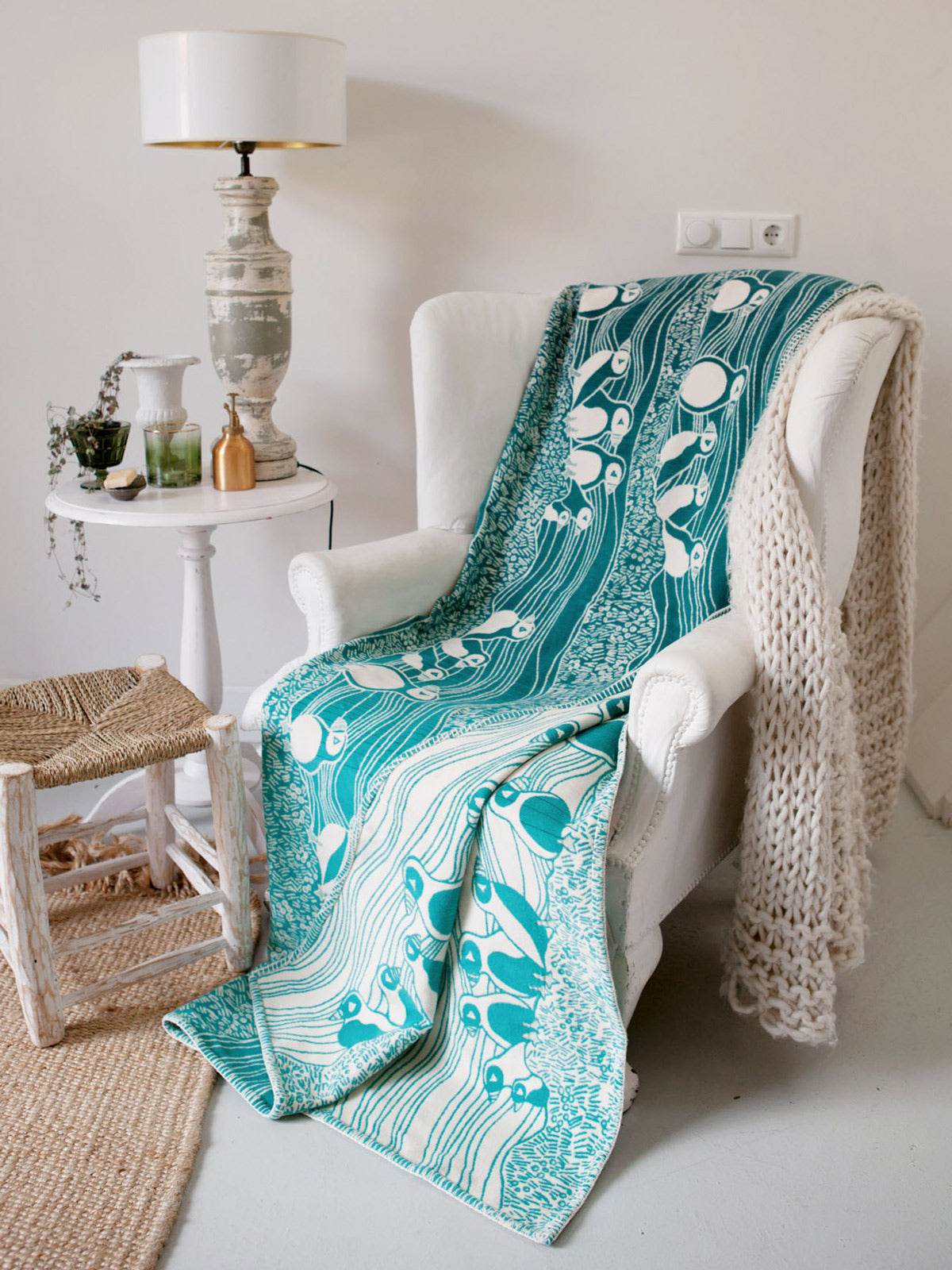
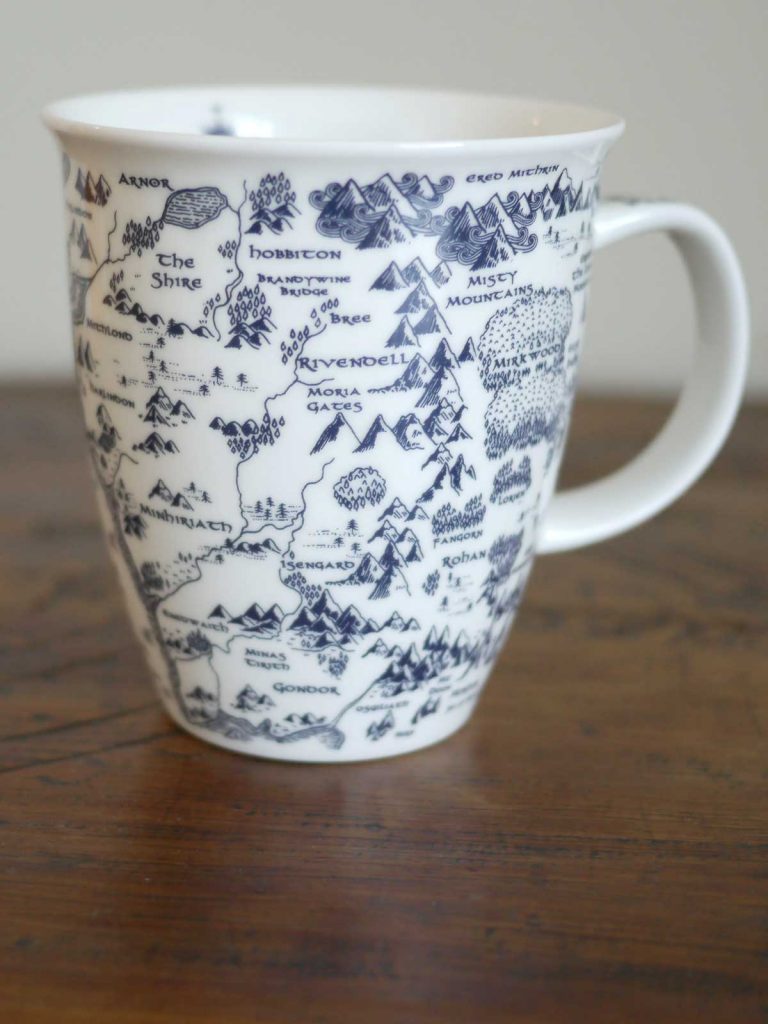

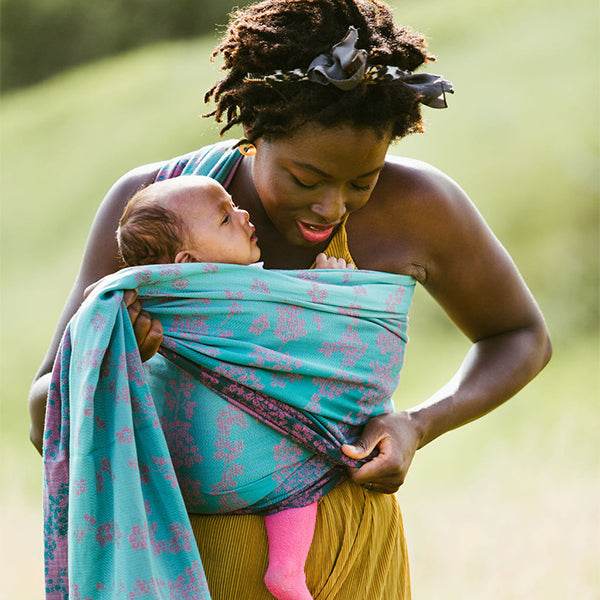
 https://oschaslings.com
https://oschaslings.com